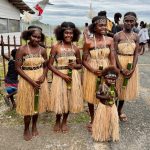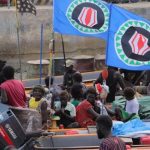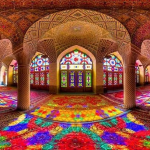While known as a devoutly Royalist land of smiles there is a real dark side to Thai politics and character as evidenced by the Thai Communist insurgency that rocked the country.
Said rebellion lasted for decades saw many killed and was very much intertwined with the falling dominos of Cambodia Vietnam and Laos. What though happened with the Thai Communist insurgency and why did it not succeed
Land of Coups
Thailand has never been a stable democracy no matter how many guidebooks talk about its temples beaches and friendly locals. Since the end of absolute monarchy in 1932 the country has been defined by its endless cycle of coups. The first real military coup came in 1947 bringing the generals back into power and setting the tone for the next seventy years. From then on it became a sort of political merry-go-round where the military would overthrow civilian governments with alarming frequency almost always claiming to protect the monarchy or restore order.
The 1957 coup led by Sarit Thanarat reasserted military rule and aggressively promoted the monarchy as a symbol of national unity. The monarchy was pushed into a near-sacred position to give legitimacy to whoever held power. In 1973 a student uprising briefly gave hope for real democracy but it ended in bloodshed by 1976 with another coup and the infamous Thammasat University massacre. The 1991 coup again replaced an elected government and even in recent years 2006 and 2014 saw the tanks roll out once more. In short the ballot box has always taken a backseat to the barrel of the gun.
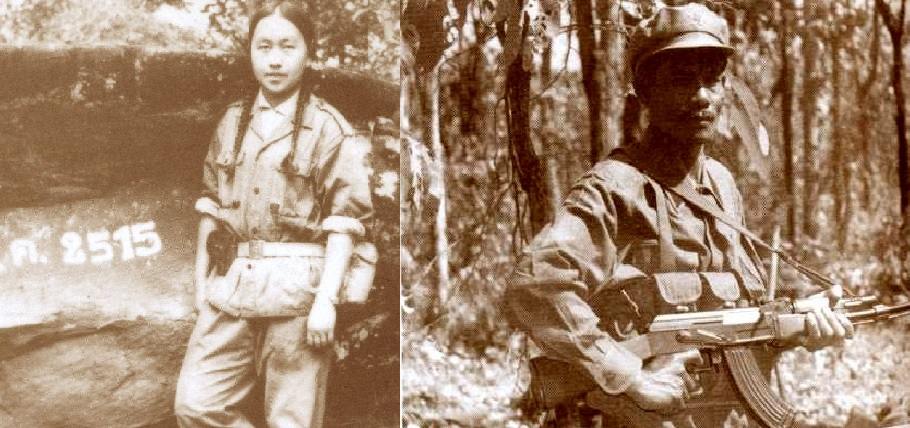
The Start of Communist Insurgency in Thailand
The roots of the Thai Communist insurgency go back to the early 20th century but it was in the 1960s that things really started to boil over. Inspired by China and Vietnam and fuelled by local grievances the Communist Party of Thailand began building support in rural areas particularly in the north and northeast. These regions were poor neglected by Bangkok and home to ethnic minorities who saw little benefit from royalist nationalism.
It was not just ideology but desperation. Villagers were tired of corrupt officials and a system that offered them nothing. Students disillusioned by state violence joined the insurgency in the jungles after events like the Thammasat massacre. Many hoped that like in Vietnam the revolution would sweep away the monarchy and the generals bringing equality and justice.
By the 1970s the insurgency had thousands of fighters jungle camps and support networks. Radio stations like Voice of the People of Thailand broadcast from Laos. Arms flowed in from China and the Soviet bloc. It had the makings of a real movement and it terrified the Thai establishment enough for them to call in favours from Washington.
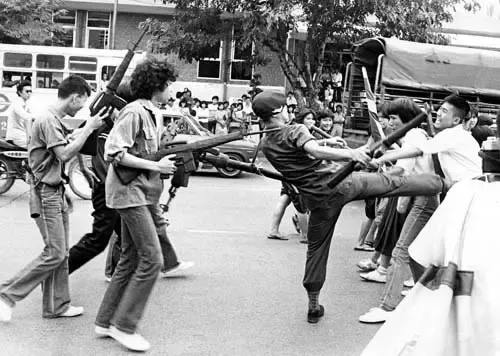
Why Did the Thai Communist Insurgency Fail
The Thai Communist insurgency failed for one simple reason it was the domino that was not allowed to fall. With Laos Vietnam and Cambodia already under communist control the United States and its allies were determined to hold the line in Thailand. Billions in aid and military support flowed into Bangkok. The Thai military modernised built roads and bases and flooded insurgent areas with troops and counter-propaganda.
But it was not just brute force. The Thai state was also flexible. It offered amnesties to insurgents started rural development projects and co-opted parts of the left into mainstream politics. By the 1980s the Communist Party was weakened not just militarily but ideologically. The Khmer Rouge nightmare next door made many rethink the communist dream. The Thai monarchy with its carefully curated image became a symbol of stability even if that image was propped up by censorship and propaganda.
What is perhaps most ironic is that much of the supposed Royalist loyalty seen today was born out of anti-communist propaganda. Love of King and country was not always organic it was engineered as part of the Cold War fight. And in the end the insurgency fizzled out not with a grand battle but with defections negotiations and exhaustion.
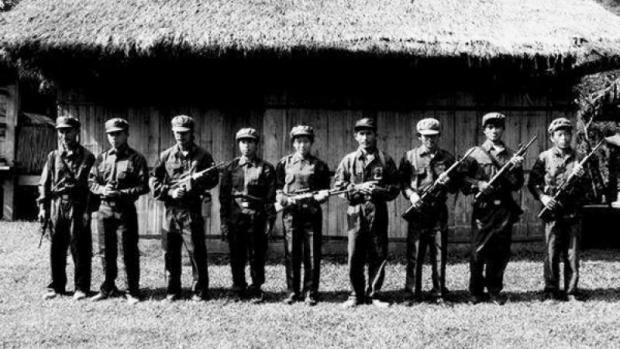
Dark Tourism Related to the Insurgency
While there is no official dark tourism trail dedicated to the Thai Communist insurgency remnants can still be found in the northern provinces such as Chiang Mai Chiang Rai and Loei. Former jungle camps guerrilla tunnels and abandoned bases occasionally open to visitors offer a glimpse of the brutal guerrilla warfare fought in the thick forest.
Phu Hin Rong Kla National Park is perhaps the best known site where visitors can walk through former communist strongholds see relics of the conflict and hear stories of the fighters who once called the jungle home. Local guides sometimes offer tours recounting the insurgency’s history though it remains a sensitive subject.
Visiting these sites offers a sobering look at a chapter of Thai history largely hidden from mainstream narratives reminding us that beneath the smiles and temples there was a brutal struggle for the soul of the country.
And in some respects even the many sites related to the Khmer Rouge, such as Anlong Veng are in someway related to the Thai Communist Insurgency.
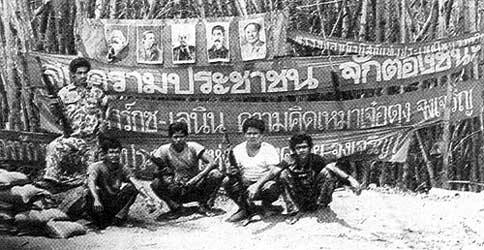
Hangover from the Thai Insurgency
The legacy of the insurgency is still felt in Thailand’s political system today. Despite nominal elections the country remains under the firm control of the military and monarchy. The 2014 coup installed a military government that continues to limit political freedoms and clamp down on dissent.
The monarchy remains a powerful symbol though much of its authority is carefully managed and protected by strict laws. Loyalty to the crown is often conflated with patriotism and criticism is rarely tolerated. Some analysts argue that the royalist image is a construct designed to maintain the status quo and suppress opposition.
In many ways the struggle that once played out in the jungles has morphed into a more subtle form of control but one that still prioritises order over democracy and myth over transparency. The Thai Communist insurgency may be a thing of the past but its shadow remains in the political landscape of modern Thailand.
Click ti check out our Thailand Tours.



